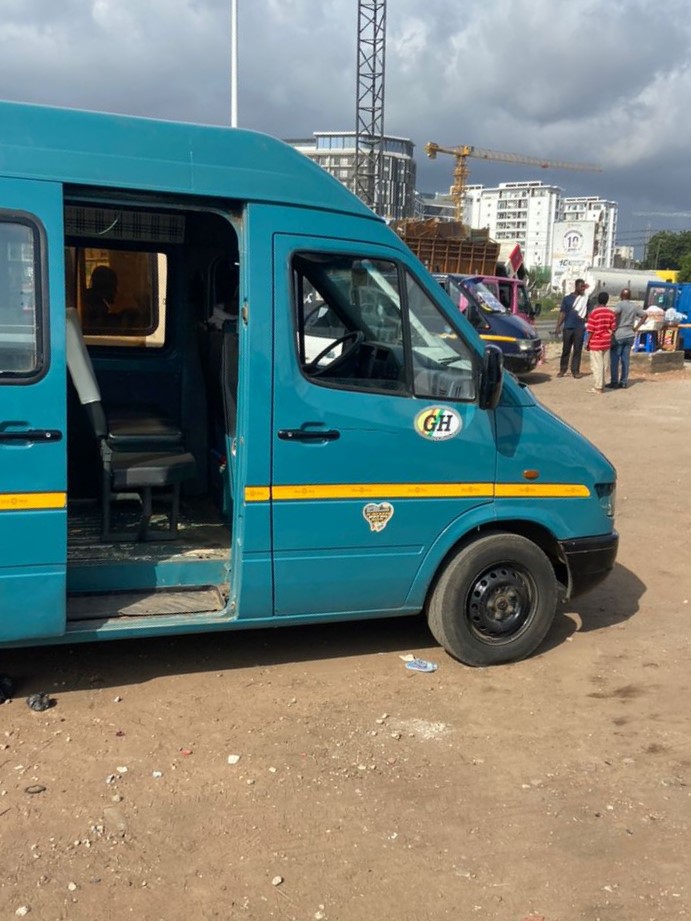A quick Google search of ‘Ghana’ reveals glowing stories that paint our small West African nation as a beacon of peace, prosperity, and progress, a utopia, it seems from afar. But up close, Ghana’s reality is far from perfect. Beneath the headlines lies a laundry list of issues longer than the fault codes on a flood-damaged Range Rover.
As a motoring journalist, one issue that stands out above the rest is the state of our nation’s public transportation system. Imagine; you’re running late for work, you finally board a Trotro, and it breaks down just a mile from where you started, leaving you stranded on a busy roadside. For many of us in Accra, this scenario isn’t hypothetical it’s a regular frustration. And it’s only a glimpse of the larger dysfunction plaguing our public transit.
AN OVER RELIANCE ON AN EGED ROAD NETWORK
According to the Ministry of Roads and Highway, as of 2023, Ghana’s national road network spanned a distance of about 94,203km and of this only about 28,480km are urban roads, 50,775km feeder roads and 14,948km trunk or long-haul roads. Ghana is one of the largest west African nations with an approximate land area of 238,533 square kilometers (92,098 square miles). As such, a road network just under 95,000km is woefully inadequate to serve a population of 32 million Ghanaians and growing.
The infrastructure isn’t just inadequate, but dated. Case in point, the Accra – Tema motorway constructed in 1965 under Ghana’s first president Dr. Kwame Nkrumah is just now getting an expansion after years of patches that failed to ease congestion or restore the road. Once just a motorway, the Accra -Tema motorway now has residential and businesses on either side of the road which has increase foot traffic. Commuters are forced to cross this busy highway without pedestrian bridges, putting themselves at constant risk and leading to a higher likelihood of accidents.
With privately owned minibuses otherwise known as tro-tro being the main public transport in major cities like Accra and Kumasi, consumers are left at the mercy of bus operators and owners whom transfer the cost of maintaining their fleets down to passengers in the form of hefty ride fare for what is essentially an overcrowded and uncomfortable ride.
AT THE MERCY OF RUST SHUTTLES “TRO-TROS”: HOW GHANA’S INFORMAL MINIBUS SYSTEM LOWERS COMFORT FOR COMMUTERS
Though trotros are the backbone of transport in Accra and other major cities, the system is far from safe let alone efficient. Most trotros are heavily used Sprinter vans and smaller minibuses from brands like Toyota, Hyundai, and Nissan. Driven by profit, operators often prioritize filling every possible seat over ensuring passenger comfort or safety. This results in cramped seating, poor ventilation, and even hazardous conditions, with exposed, rusted metal edges that make injury a constant risk. Combined with aggressive driving practices, trotro rides often feel more perilous than practical, exposing commuters to daily dangers while compromising the quality of city transport.
Aside the aggressive driving that trotros are known for, some of these cars look more at home at the junkyard than on our roads, which raises concern about the requirement and inspections that these minibuses are subjected to before being greenlit to carry passengers. According to a 2020 report by oxfordbusinessgroup, a staggering 60% of Accra’s public transport needs is covered by trotro, this roughly means that for every 10 public servants that commute to work, 6 – rely on trotro services to get to work on time.
Make no mistake, the issue here isn’t simply that trotros are uncomfortable; it’s that many of them are essentially moving road hazards with passenger permits. Not only are many of these buses unfit for public roads, but they also pose serious health risks to passengers, including exposure to carbon monoxide from leaking exhaust pipes, tetanus risks from exposed rusty panels, and physical discomfort from cramped conditions. And these are just a few of the dangers faced by Ghana’s daily commuters.
FAILURE TO HARNESS THE POWER RAIL SERVICES
Ghana’s reliance on aging road infrastructure is closely linked to the underdevelopment of its railway sector. While countries in East Africa, like Tanzania, Burundi, and Rwanda, are advancing with high-speed electric rail systems, Ghana is still in the early stages of a significant national railway initiative. The Ghana Railway Master Plan envisions a network of over 4,000 km, which, if completed, could drastically improve transportation efficiency and reduce road congestion.However, the success of this ambitious project largely depends on maintaining continuity despite any potential changes in government which any Ghanaian will tell you is not guaranteed.
As a result of years of neglect, lack of funding and prioritizing, much of the rail network build during the colonial era has fallen into disrepair and will need a complete reconstruction. According to a report by the Deutsche Bank published in August 2022, only about 13% of Ghana’s original 947km rail tracks are operational.
With Ghana’s track record in mind, the future of railway transport is awaited with bated breath. However, as the railway sector progresses, it is critical for the Ministry of Transportation and the Ministry of Roads and Highways to strengthen the existing public transport system by prioritizing safety through rigorous vehicle inspections, comprehensive driver training, and continuous road improvements. Together, these efforts can provide a safer, more efficient transport system, benefiting Ghanaians and supporting the country’s economic growth.



Leave a Reply